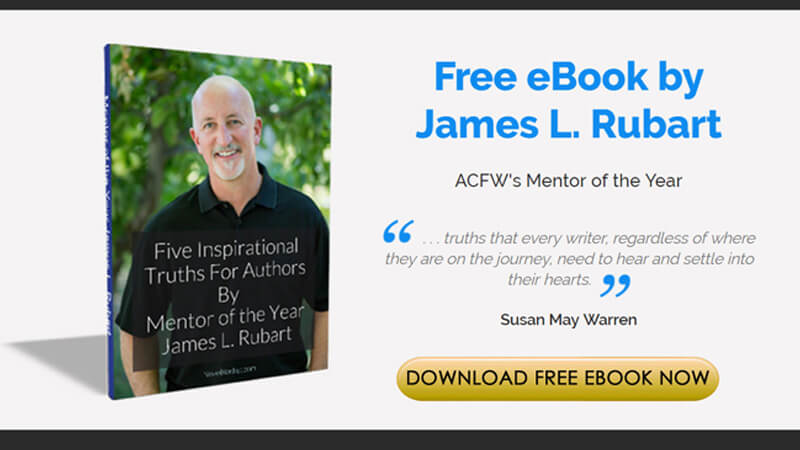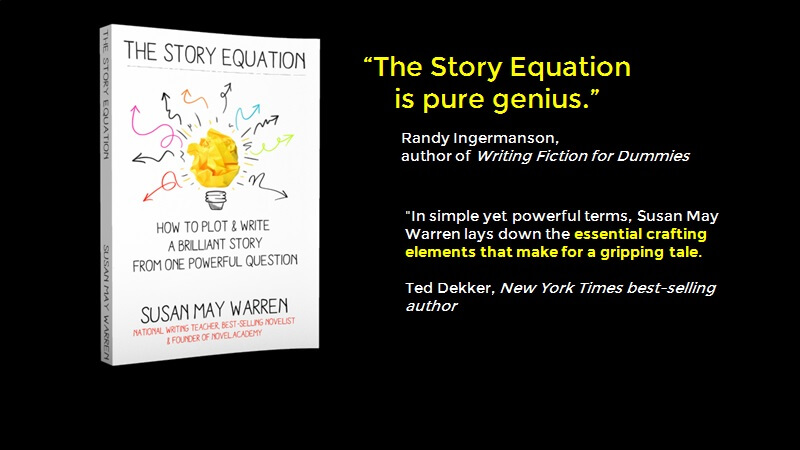 By Robert Liparulo
By Robert LiparuloI like stories that surprise me, show me things I’ve never seen before, and get me playing make-believe like I haven’t since selling my G.I. Joes and Legos at a garage sale.
Few tales are as make-believe (or as fun) as fantasy fiction—from the ones I call “light fantasy,” like alternate histories, time travel, and monsters in the “real” world, to the hard-core stuff involving space odysseys, made-up worlds, and dragons.
Trouble is, I’m a skeptic, a hard sell. For a story to grab me, no matter how far-fetched it’s supposed to be, I have to see and feel things I recognize, things I relate to.
Sounds like common sense, but as a voracious reader of published fiction and a judge in umpteen writing competitions, I’m here to tell you it’s not as common as you’d think. If the first half of a book has left you thinking, I can’t get my head around this, or more simply, Oh, come on!—then you know what I mean.
The idea of reality-based fantasy truly hit home when, after writing three thrillers for adult
 s (Comes a Horseman, Germ, and Deadfall), I decided to tackle a fantasy-adventure story for young adults.
s (Comes a Horseman, Germ, and Deadfall), I decided to tackle a fantasy-adventure story for young adults.In the Dreamhouse Kings series, a family moves to a small town in northern California, so Dad could take a job as principal of the local middle and high school. They move into a run-down Victorian home, where they find a hidden hallway of doors. Each door leads to a portal to a different time in history.
But not only can they go from the house to the past, people from the past can come through into their house. Someone does—and kidnaps Mom, taking her into some unknown place in the past. The family—primarily brothers David and Xander—begin a quest for Mom, which takes them to all sorts of dangerous and fascinating places throughout time. We slowly learn that the Kings are in the house for a very specific purpose, and they must do much more than “simply” find their mother.
My goal was to make the story feel as real as possible, to entice readers not only to enjoy my story of time travel, but to think maybe . . . just maybe, this could really happen. Well, I’d settle for their wishing it was real—and that they were part of the adventure. And just to set the target a bit higher, I wanted to reach even readers who don’t normally like fantasy elements in stories; I wanted them to be surprised by how much they liked it.
In crafting the story, I identified a few key ingredients that would help me reach this goal. These aren’t new ideas; many writers have used them to handhold readers into brilliant tales of fantasy. (And even non-fantasy authors incorporate them to varying degrees, but I believe fantasy writers need to be all the more aware of them and wield them more deliberately.) If you're a writer, consider making a mental checklist from these “tips of the trade.”
As a reader, you may benefit from knowing what’s drawing you into a story . . . or why it’s not working. So, here’s what I look for:
1. Characters who feel. The way to a reader’s heart is through a story’s characters. Doesn’t matter if they’re fighting dragons or stepping into the Roman Colosseum during a gladiator fight, a character has to experience fear and courage, love and heartbreak, blood, sweat and tears—all of it realistically rendered in a way the reader understands. In the Dreamhouse Kings, I decided to make the time travel parts feel real by making everything else absolutely real.
The poor King boys (ages 12 and 15) suffer so many cuts, bruises, and broken bones that a popular contest on my website involves identifying as many wounds as possible on medical body charts. They cry for their mother, and ache at the possibility of never seeing her again. They also realize how much they need and love one another, and even find time to laugh.
Look, too, at Ender Wiggin in Orson Scott Card’s brilliant Ender’s Game: That boy went through such a gamut of emotions (loneliness, anger, triumph, self-discovery) that despite the future setting on a spacecraft, even non-sci-fi fans ate it up.
2. A character who’s skeptical. I believe some authors have done so much research and spent so much time contemplating the fantasies of their stories that buying into the fantastic is a no-brainer for them. Their characters barely shrug at the concept of vampires or the shattering of the laws of physics.
I read a lot of fantasy, but I still want to be convinced every
time. It helps when at least one character mirrors my disbelief. It tells me the author knows he or she is venturing into fantasy territory, so I trust that I won’t be left behind. As the evidence slowly convinces the skeptical character, more times than not, I’m convinced as well. In other words, the author builds a bridge between reality and fantasy—if not necessarily with rock-solid explanations, then at least with feasible theories and suppositions.
3. A learning curve in understanding the fantasy. “Hey, a watch that stops time—let’s do it!” You’ve probably seen the equivalent of this many times: the characters instantly grasp and use some crazy new item or idea. I want to see them stumble, misuse it, make mistakes, figure it out. A large part of the fun in Dreamhouse lies in the family’s near fatal mistakes as they rush to find Mom, and how their assumptions about time travel and the portals consistently lead them into more trouble. They eventually set up a “Mission Control Center” to map where the portals take them and what they can and cannot do in the past.
In Richard Matheson’s I Am Legend (my favorite book), protagonist Robert Neville is constantly learning new things about the creatures after him and the virus that turned them into vampire-like beasts. Readers get to tag along and figure out the problems and solutions with him; discovery becomes a team effort between character and reader.
4. Real surroundings and situations. Like characters who laugh and cry, hyper-realistic environments make the fantasy elements feel more real—because everything else is. When the King family finds the house, it’s dusty and run down, the banister leaves splinters in their palms, when the electricity comes on, old bulbs pop. Tolkien was a master at this, chronicling in Lord of the Rings the hobbits’ journey in almost painful detail. He gradually pulls readers in until we’re there, sore—if not hairy—feet and all. Likewise, characters should eat, sleep, go to the bathroom, whittle . . . whatever makes them real.
5. Consistency. A major Hollywood studio is currently pushing the Dreamhouse Kings toward the silver screen—an interest that started after the first two books came out (the last of six books in the series just came out). One eye-opening conversation I had with a producer involved the “mythology” of the house: What are the rules of time travel, of the portals, of surviving in the worlds of the past? It dawned on me that movie people are particularly sensitive to remaining consistent to the rules of made-up conceits because audiences can spot inconsistencies easier in the condensed stories of film (and movies rarely have the time to explain how seeming inconsistencies really aren’t).
But their concern should also be the author’s. Readers of time-travel stories don’t want to be told that technology can’t be used in times before it was invented, and then read later how our hero uses a machinegun against Genghis Khan. That doesn’t happen in Dreamhouse, by the way, but it easily could have. In this context—talking/blogging about it here—it sounds silly and obvious. But, trust me, in a fast-paced story, or one that’s complex or long, little rules that don’t at first seem like rules to the author (Does a door open into or away from a room?) can be forgotten . . . only to come back to jar a reader out of the story. While writing the subsequent books in the series, I found myself frequently consulting a catalog of Dreamhouse rules I’d drafted for that producer.
Not every story requires equal doses of these elements. Think of them as spices: the amount authors use of each depends on the dish they’re preparing . . . and their personal tastes. I labored on the Dreamhouse Kings to make the unrealistic realistic, and it appears to have worked: The books have became best-sellers and Scholastic picked them up for its book fairs and book club. More rewarding are the letters I’ve received from kids and adults, telling me how real the stories seem. So I guess fantasies can also become real; they did for me.
_________________________________________________________
“A powerhouse storyteller delivers his most fantastic ride yet!”
— Ted Dekker, bestselling author of Chosen and Infidel
Best-selling novelist Robert Liparulo is a former journalist, with over a thousand articles and multiple writing awards to his name.
His first two critically acclaimed thrillers—Comes a Horseman and Germ—were optioned by Hollywood producers. Bestselling author Michael Palmer calls Deadfall, released in November, 2007, “a brilliantly crafted thriller.” Liparulo’s young adult series, Dreamhouse Kings, debuted in May 2008, with House of Dark Shadows and Watcher in the Woods.
He is currently working with director Andrew Davis (The Fugitive, The Guardian) on the novel and screenplay of a political thriller.
New York Times best-selling author Steve Berry calls Liparulo’s writing “Inventive, suspenseful, and highly entertaining . . . Robert Liparulo is a storyteller, pure and simple.”
Liparulo lives in Colorado with his family.























Great post, Robert!
ReplyDeleteI can see these rules seeping into my genre as well.
Thanks for these points.
A great author, the master of pacing, and the impetus for me reading the Dreamhouse Kings Series and enjoying it. I hate fantasy. Robert's series makes an exception to my every rule. And excellent advice--you gotta address the skeptics. Like me. And you gotta love the protagonists.
ReplyDeleteCan't wait for his next adult novel.
Thank you, thank you, thank you! Excellent article. BTW: I one thing I really loved about DK is that the characters needed the three items to enter the portals...and the influence and power Time exerted over the objects and people. Brilliant!
ReplyDeleteRobert, I LOVE your books and am thrilled to have something of yours to give to the many YA fantasy readers in my life.
ReplyDeleteKeep up the great work!
Cheryl
The only one I don't agree with is the rule about the skeptic. If vamps, etc, are 'out' in the society, unless they've only just been outed, then society has had enough time to adapt to them, and they are common place.
ReplyDeleteIf the creatures, etc, aren't outed yet, but your story takes place only within the society - ie, all the characters would already be familiar with the idea there's Other in the world - I don't require a skeptic.
It's only if there OUGHT to be a skeptic that I want one. If somebody who never knew about gnomes stumbles on a gnome den, they should not go, "Wow, cool, gnomes!"
Such an excellent piece! I particularly liked the part about the need for skepticism within the story. Both Jim Butcher and Patricia Briggs' urban fantasy novels have characters who doubt the magical/mystical stuff that goes on around them, and lumps it in with telephone psychics, etc.
ReplyDeleteThanks!
There is some great advice here and I think it is really important for fantasy to feel real. I find that if I can believe the character then I can believe the world but creating a believable chracter is really challenging.
ReplyDeleteThanks so much for sharing this advice.
Really great advice and so true. The reader must be made to care about the characters somehow if not, they will not be involved in the story. Oh and yes, the need for skepticism is very true. P.S Richard Matheson's I am Legend is also one of my favourite books. Brilliant take on vampirism.
ReplyDelete